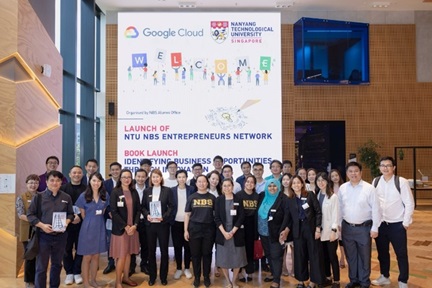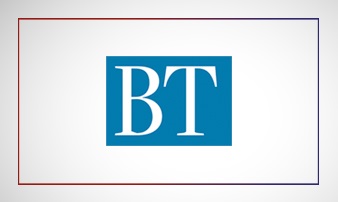Sparkling or still: It depends on the brand name
Nanyang Business School's Rym Tazi and Gemma Calvert and University of Dundee's Abhishek Pathak examine how carbonated drink brands can use sound symbolism to stand out from the competition.
- Sound symbolism is the idea that certain sounds carry meaning and is increasingly important in marketing.
- Despite its market size, little is known about how the strength of carbonation is conveyed via brand names.
- There are strong links between speech sounds and sensory attributes, e.g long vowels are associated with sweetness.
Why it matters
Amid an increasingly saturated market, companies in the beverage industry can use more voiceless consonants in a brand name to convey a higher level of carbonation and attract consumer attention during the very limited time when a shopper is scanning the shelves.
- Voiceless consonants are perceived as spikier than voiced consonants – an attribute associated with carbonation.
- The angularity of letters is also linked to higher carbonation, whereas letter roundedness is associated with still drinks.
- A strategically crafted brand name can immediately convey to consumers the carbonation strength of a beverage.
The rise of carbonated drinks
In 2020, the global carbonated soft drinks market was estimated to be worth US$221.8 billion and is projected to gain even more traction over the coming years. With demand being driven primarily by the health-conscious younger generation, new beverages are increasingly being introduced and filling up market shelves.
Craft beer, seltzers and variations of sparkling water have all been prime examples of this massive trend. This push was also strongly influenced by the COVID-19 pandemic, which led to more people staying home and consuming such drinks. At a CAGR of 4.9%, the market is expected to reach a staggering US$325.2 billion by 2028.
Brands in the industry have been heavily investing in R&D to differentiate themselves from the competition, mainly through the introduction of novel flavour combinations, aesthetically pleasing packaging and added health benefits. Complications then arise, however, when trying to find the best ways to stand out in an increasingly crowded marketplace.
The power of a name
Developing a brand name is a task that requires more attention and research than is often assumed. The reason for this lies in the known potential impact that brand names have on consumers. Often, along with packaging, it is part of the first encounter they have with a brand and thus plays an important role in the formation of first impressions, including expectations about the nature and quality of the product itself.
Sound symbolism – the idea that certain sounds carry meaning – is a branch of linguistics that carries an increasingly greater importance in the marketing world.
Marketers aim to convey messages through brand names, often seeking to relay implicit information about product attributes to the consumer. For example, made-up names such as “Haagen Dazs” (to convey premium[1]ness); existing words such as “Amazon” (to signify vast geographical coverage); and “Lush” cosmetics in the UK (to connote desirability).
In the bottled mineral water category, the famous advertising tagline “Schhh… Schweppes” was created to evoke the sound of the gas escaping as a bottle is opened.
Sounds tasty
Despite the significant size of the market, little is known about how the strength of carbonation can be conveyed to consumers via brand names. For instance, two major sparkling water brands, San Pellegrino and Perrier, pride themselves on having different carbonation profiles that offer a soft, natural carbonation and a fizzier sensation, respectively. These attributes, however, are only clear to the customer after being tasted.
In a blind taste test, 69% preferred San Pelligrino because they said it “tasted” fizzier (although in fact, Perrier is slightly more acidic and claims to be fizzier than San Pelligrino). However, both contain the same number of voiceless consonants /p/ so the two cannot be compared. An alternative comparison would be between San Pelligrino and Schweppes, which certainly uses sound symbolism to connote fizziness.
Our research set out therefore to find a more efficient way to convey these differences by manipulating certain sound symbolic features within hypothetical brand names. Past research has demonstrated strong links between speech sounds – or phonemes – and sensory attributes. Vowels and consonants, for instance, have been shown to be differentially linked to tastes. In fact, long vowels have been associated with sweetness.
A similar link has also been demonstrated between voiceless consonants, such as /k/ and /t/, and sour and acidic tastes. Furthermore, consistent with the common description of carbonation with “sharp tastes”, carbonated water has been shown to be strongly associated with sharp sounds (eg /t/ and /k/) and angular shapes, as opposed to still water which consumers associate with softer sounds (eg /b/) and rounder shapes.
Voiced sounds are those which are accompanied by the vibration of vocal cords (felt as vibrations if one places fingers on the Adam’s apple while speaking). For example, feel the vibration of vocal cords in pronouncing the consonant /p/ (voiceless) versus /b/ (voiced, i.e. with vibrating vocal cords).
Different speech sounds connote different things about brands, products and even your name.
Since the CO2 present in a beverage appears to have a distinct taste and is often described as sour and acidic, we hypothesised an association between voiceless consonants with carbonated water and argued that consumers would expect brand names composed of the latter to be more appropriate for carbonated (as opposed to still) water brands.
The study
In the English language, six pairs of phonemes exist where the predominant difference is only voicing – /p, k, t, f, sh, s/ and /b, g, d, v, zh, z/ respectively. The former six phonemes, i.e. the voiceless phonemes, are produced by air passing through the mouth, whereas the latter – the voiced phonemes – require the use of our vocal cords (pronounced “ba”/”ga” etc).
In this study, with approximately 60 native English speakers recruited, we used four phoneme-pairs to create 24 hypothetical brand names, all with the letter /a/ as the only vowel, (in order to avoid influence from vowels, which themselves can convey different attributes).
First, the respondents were told that a company was searching for brand names for two of its bottled water brands, one carbonated and one still. Presented with a list of potential names, each participant had to rank the names on a linear scale of perceived carbonation – or how fizzy the drink sounded. The general trend of this experiment revealed that words created from voiceless consonants, as opposed to voiced ones, appeared more appropriate for the carbonated water brand.
The participants were then asked to freely create brand names that they deemed to convey fizziness from a given list of letters. Consistent with the previous results, these revealed that a significantly higher number of voiceless consonants were used to create the brand names for carbonated water and cola drinks.
Moreover, as research suggests that consumers often link carbonated water with angularity and still water with roundedness, we decided to use this shape-sound paradigm to test how our participants rated displayed words based on how rounded or spiky they believed they sounded.
In line with our previous findings, words with more voiceless consonants sounded spikier to our respondents and were matched with a hypothetical carbonated water.
Standing out in a crowd of carbonation
In a market that is becoming increasingly saturated, companies have to come up with more creative ways to attract consumer attention and convey a message in the very limited time consumers grant to scanning the shelves. Our study provides evidence that using more voiceless consonants in a brand name can convey a higher level of carbonation – evidence that can be useful to companies involved in the beverage industry.
Not many brands have yet to adopt this as it is pretty new research and currently, most soft drinks manufacturers use “Max” to signify the strong carbonation as they don’t want to lose out on the advantage of the strong/established brand names. Similarly, beer manufacturers use “light versus strong”.
The mechanism by which some manufacturers highlight the sourness of a product or strength of a beer works on similar principles (ie, akin to carbonation or spikiness) and uses sounds to signify sourness and harshness, eg “Ten-ton truck” (strong beer brand) and “Extra Starka” (extra strong lime lozenges).
In fact, this is also increasingly relevant to brands as researchers are more and more interested in how to connote the level of acidity in brand names and sound logos. In a world that is now more health-conscious than ever, oral health is also taking the spotlight. As acidity has been shown to significantly increase the risk enamel erosion and tooth decay, it has been recommended to consume beverages that are closer to a neutral pH.
With carbonated drinks already being more acidic than still water, brands could capitalise on a brand name that conveys a healthier and more neutral beverage.
Source: WARC





